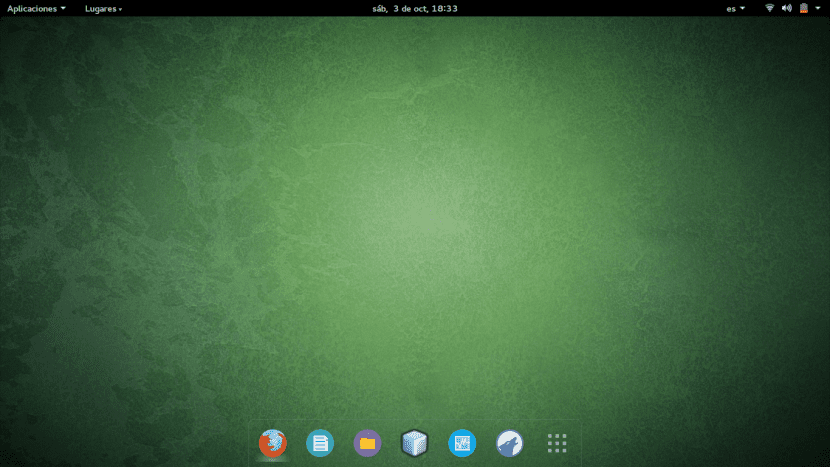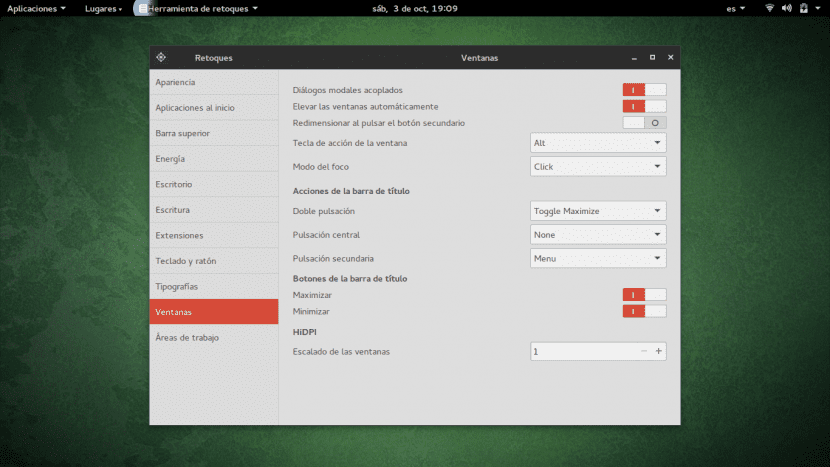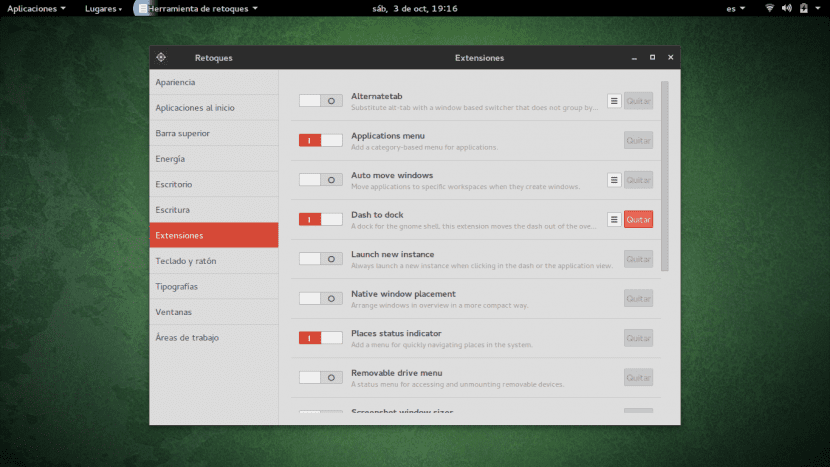
A couple of months ago we already dedicated an entry to this section, in which we teach you what the editors' desks look like aesthetically Ubunlog and how they are personalized. In the previous post, specifically, we showed you the desktop with Xubuntu 14.04 LTS by Sergio Agudo. In this post I will show you the customization of my desktop with Ubuntu GNOME 15.04.
As you well know, GNOME has always been one of the most used desktop environments, due to its great customization capacity and its minimalism. Still, in GNOME 3 quite radical changes were implemented that completely changed the aesthetics of the environment. In this post, through the customization that I will show you, you will be able to see how to have a GNOME a little more similar to those of yesteryear.
My beginnings in Ubuntu
To talk about my beginnings in Linux (Ubuntu), we have to go back to about 5 years ago. I was in 4th grade of ESO and my love of computer science had started recently, although I had always been curious. Suddenly one day my desktop computer, for whatever reason, became inaccessible. So I mentioned it to a friend who was also beginning to be interested in this world and he advised me that, instead of reinstalling Windows, I should install a new Operating System that he had tested. This was Ubuntu 10.10 with GNOME.
I remember that one of the things that surprised me the most, as Sergio Agudo commented in the previous entry in this section, was that the drivers will be installed automatically along with the installation of the Operating System. Then once it was installed, I was completely blown away. That was totally new to me. I didn't even know it was a Terminal, but I knew I was going to get along with that you just installed. In a couple of days, I had the fully customized desktop and I was already starting to struggle with the Terminal. That it ran so fast on my PC that it is nothing to write home about, fascinated me.
Over the next several years I learned the basics of Linux and how to "move" around the terminal. I also remember that I became addicted to testing distros and graphics environments that I had never tried. I remember using Lubuntu, Kubuntu and, many more outside of Ubuntu how Gnew Sense, Cent OS, Fedora, Linux Mint y open suse.
The customization I use
When I installed Ubuntu GNOME 15.04 I was completely surprised with the changes that GNOME 3 had. The last time I had used GNOME was in 10.10 so I had to get used to the changes and make a couple of adjustments so that everything worked something more similar to what I remembered.
Enabling the buttons to maximize and minimize
The first thing that surprised me was that in GNOME 3, by default, buttons to maximize and minimize do not appear. Although this is not a problem since, to re-enable the maximized and minimized buttons, we have to search for the application Retouching Tools which is installed by default, go to the tab Windows and enable the "Maximize" and "Minimize" buttons, as shown in the following image.

Adding the Applications and Places tabs
Then added the classic GNOME tabs that come out at the top left, as are the eyelashes of Applications y Places. To do this, we have to go back to the Retouching Tools application, but in this case you have to access the tab Extensions. The "extensions" are a series of programs for GNOME that we can install through the Internet, specifically using Firefox, in this website. Once we are in the Extensions tab within the Retouching Tools, we have to enable the buttons Application Menu y Places Status Indicator as you can also see in the following image.

Installing Dock
As you may have seen in the previous image, there is another button activated, called dash to dock. This extension is not installed by default, so if you have not installed it it will not appear. To install it, all you have to do is go to the link on the extensions I mentioned in the previous paragraph, look for the extension "Dash to dock" and install it. Remember that this extension system is only supported in Firefox, and also, you must have the Firefox plugin Gnome ShellIntegration activated. So when you enter this website, take a good look at the window that will appear asking you if you want to activate the plugin.
Once you have installed Dash to dock, the dock will appear on the desktop, which is exactly the same as the one that appears when you access Activities in the top left-hand corner. If you right click on the Dock icon «Show applications», you will get the option to configure Dash to dock. This is where you can change the appearance of the dock. If you want the dock like mine, you have to remove all the opacity, so that it is 100% transparent.
Changing window theme and icons
If you want to have the same windows and icons theme as me, then I'll explain how to install them. The windows theme is called Numix and we can download it here. To install it, we have to unzip the file that you have downloaded and copy the unzipped folder (which usually has the same name as the theme itself) into the directory / usr / share / themes. To do this, we open a terminal and go to the directory where we have the folder for the theme to be installed. Next, to move the folder we execute:
sudo mv foldername / usr / share / themes
Next, if we go back to the Retouching Tools, in the Appearance tab, we can now select the theme in the drop-down referring to GTK.
As for the icons, the theme I use is numix circle, and we can install it through its repository with:
sudo add-apt-repository ppa: numix / ppa
sudo apt-get update
sudo apt-get install numix-icon-theme-circle
To activate the theme, we have to go back to the Retouching Tools, and in the Appearance tab select Numix Circle in the drop-down referring to the icons.
As a curiosity, Numix is a free project that is dedicated to designing icons and themes for different platforms, in your GitHub page we can find all his projects, including the ones we have mentioned in this post.
The programs I use the most
One of the programs I use most frequently is Amarok, a wonderful music player that allows you to see the lyrics and tablatures of the song that is playing. To install it, you can do it simply with:
sudo apt-get install amarok
Another program that I use frequently in my day to day as a student is NetBeans for programming in Java and the text editor Vim to program in C and other languages like Ada. You can install Vim by:
sudo apt-get install vim
Installing NetBeans is a bit more complex. You have to download the Java Development Kit (JDK) and the NetBeans. But don't worry, Oracle allows you to download both in the same package. For this we go to this link, we accept the License Terms above entirely, and click on the Linux x64 (64-bit) link. Once downloaded, we go through the terminal to the directory where we have downloaded the package and execute:
sudo sh packagename.sh
Next we will get a graphical installation wizard with which we can install JDK and NetBenas comfortably.
Anyway, I hope you have had a good time reading the post and that you have had another idea with which to customize your desktop if you have Ubuntu GNOME.
😮 cool
???????????????????
15.04 LTS?
Well, I, who already combed a few gray hairs, started this in 2011 (I already had many then), with Ubuntu 10.04. It wasn't at home, it was at work, thanks to a fellow computer scientist who offered to work with an LTSP thin client, moving Ubuntu 10.04. The change was radical, without failures, fast, excellent. I started to do tests with virtual machines and in 2012 I dared to install Ubuntu 12.04 together with Windows on my own PC and since then, Windows only starts to play games that do not have a Linux version, and more and more people are using it. have, in fact I am now with the Shadows of Mordor on my Ubuntu 14.04.
In my opinion there is no color, and if there is no more implementation of Linux it is for the usual, monopolies, economic power, dependence ...
Greetings.
Where do I download the wallper? by the way, good post.
Good afternoon Gower,
The wallpaper comes directly with the system, so you don't need to download it from anywhere. If you go to the settings to change the desktop background, you will find it. Greetings.
I usually love gnome. But I am trying to install extensions to be able to move the favorites bar with gnome 3.14.1 on ubuntu 15.04. If I download an extension and install it, it tells me »extension not valid»
Well apparently I was able to move the bar and it looks great. Now I have a problem but associated with the screen resolution in my case a gtx 970. In one of them a sony 32- 1920 × 1080 tv and a 22 viewsonic -1650 × 1080 monitor. The problem is that I can't save the screen settings. And every time I reboot, I not only have to put the settings back, but also the audio. The other thing is that I have already saved the xorg. and the 1920 × 1080 screen the resolution is 1856 × 1045 if I give it 1920 × 1080 it does not enter the screen.